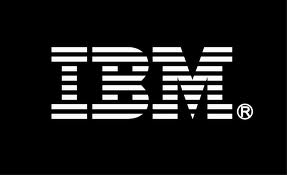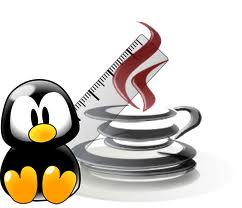| 我們致力本地化我們在盡可能多的語言的網站越好,然而這一頁是機器使用谷歌翻譯翻譯。 | 關閉 |
-
-
產品
-
資源
-
支援
-
公司
-
登入
-
.phd 文件擴展名
開發商: IBM/CyberLink文件類型: Portable Head Dump File/PhotoDirector Project File你在這裡因為你有,有一個文件擴展名結尾的文件 .phd. 文件與文件擴展名 .phd 只能通過特定的應用程序推出。這有可能是 .phd 文件是數據文件,而不是文件或媒體,這意味著他們並不是在所有觀看。什麼是一 .phd 文件?
該.phd文件擴展用於由用於編輯數字照片的程序PhotoDirector。文件與此擴展被稱為照片項目文件,因為它們被用於指代使用程序導入的圖像或編輯圖像。這個文件的擴展支持多種拍照格式。 .phd文件也可移植堆轉儲格式文件,它們在創造Javaheap拋售主要由Java虛擬機創建的文件發揮了巨大的作用。這些文件包含有關Java對象,可用於調試發生在應用程序中的錯誤。文件擴展名也使用沖床!作為CAD計劃文件,它們是必不可少的使用創造樣板房和景觀的3D格式的應用程序的用戶。它也可以用來作為在古墓麗影視頻遊戲的遊戲級文件。其他應用,如多面體數據庫和ViewChoice還利用了.phd文件擴展名。如何打開 .phd 文件?
推出 .phd 文件,或者你的電腦上的任何其他文件,雙擊它。如果你的文件關聯的設置是否正確,這意味著應用程序來打開你的 .phd 文件將其打開。這是可能的,你可能需要下載或購買正確的應用程序。這也有可能是你有正確的應用程序在PC上,但 .phd 文件還沒有與它相關聯。在這種情況下,當您嘗試打開一個 .phd 文件,你可以告訴Windows的應用程序是正確的該文件。從這時起,打開 .phd 文件將打開正確的應用程序。 點擊這裡修復.phd文件關聯錯誤打開一個應用程序 .phd 文件
 CyberLink PhotoDirector 3
CyberLink PhotoDirector 3CyberLink PhotoDirector 3
CyberLink Photo Director 3 is a program which edits and organizes the images of the user. It can remove anything unwanted portion of the images. The artist may also improve the looks of anyone in the image by using one of its features called the “beautifierâ€Â. With this option, the user may remove wrinkles, smoothen the skin, make the eyes more tantalizing and much more. The user may also utilizer a tool namely "Tooth Brush" to whiten the teeth of a person in the image. There are also numerous templates to choose on. For fish eyed distortions, there are available tools such as the Lens correction tool. This software runs on Microsoft platform like Windows XP, Window Vista, and Window 7. The processor should not lower than 3 GHz, 2 GB RAM, At least 1 GB space on the Hard Drive and a Video Graphics Array card with at least 128 MB of memory. IBM HeapRoots
IBM HeapRootsIBM HeapRoots
HeapRoots is a tool written in Java used for analyzing heap dumps. It is an unofficial utility though and will be provided “as-is”. It is a utility that will help you obtain solutions for memory problems, but it is not the solution to your main problem. HeapRoots will analyze a heap dump base on objects, object type, heap roots, heap gaps that refer to spaces in between objects, and references from and to a given object. The outcome is featured as a flat list or an indented tree. It can be filtered and sorted out. IBM HeapAnalyzer
IBM HeapAnalyzerIBM HeapAnalyzer
IBM HeapAnalyzer is a graphical utility that lets you detect possible Java heap leaks by using its heuristic search engine and Java heap dump analysis in Java programs. Java heap areas give definition to classes, objects and arrays. When the Garbage Collector allocates storage areas in the heap, an object continuously lives while its reference exists somewhere in the JVM’s active state making it reachable. When the active state stops referencing the object, it becomes garbage. It can be reclaimed for later reuse. For reclamation to take place, the Garbage Collector must come up with a potential finalizer and secure that internal JVM resources associated with the object will be returned to the pool for such resources. Java heap dumps are the snap shots of Java heaps at certain times. HeapAnalyzer analyzes these dumps by parsing them, constructing directional graphs, restructuring them into directional trees and operating the heuristic search engine. Some of the features of HeapAnalyzer are size recommendation of kCluster, list of suspects for Java heap leaks, gap list among allocated arrays/classes/objects, search engine for Java classes/objects/arrays, list of objects, arrays and classes by type name, address, object name, size, child size, child number and frequency, available heap space list by size, Java heap dump tree view and saving and loading of processed Java heap dumps.提醒一句
要小心,不要重命名擴展 .phd 文件,或任何其他文件。這不會更改文件類型。只有特殊的轉換軟件可以從一個文件類型更改一個文件到另一個。什麼是文件擴展名?
文件擴展名是一組三個或四個字符在文件名的末尾,在這種情況下, .phd. 文件擴展名告訴你它是什麼類型的文件,並告訴Windows哪些程序可以打開它。窗戶經常關聯一個默認程序的每個文件的擴展名,這樣,當你雙擊該文件,程序會自動啟動。當該程序不再是您的PC上,有時可以得到一個錯誤,當您試圖打開相關的文件。發表評論

